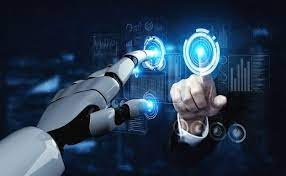Balancing Innovation and Job Stability: Unraveling the AI Conundrum.

In the quickly developing field of artificial intelligence (AI), the relationship between innovation and job security has gained significant attention. Businesses are faced with the combined issue of leveraging AI’s revolutionary capacity and maintaining worker stability as these technologies advance. Analyzing the possibilities and difficulties presented by this technological transformation is essential to solving the AI puzzle.
The core of the issue is the indisputable truth that artificial intelligence (AI) has the power to transform whole sectors, optimize workflows, and boost productivity. Artificial intelligence (AI)-driven automation can take care of monotonous, repetitive jobs, freeing up human workers to concentrate on more intricate, innovative, and strategic facets of their jobs. This is expected to boost innovation and productivity and create an atmosphere that will support the growth of enterprises.
The worry over employment stability is the other side of this technological coin, though. There is reason to be concerned that AI will make some employment obsolete. Workforce disruptions can be particularly severe in industries like manufacturing and data entry that primarily rely on manual, repetitive labor. Human workers may be replaced by robots as they grow more proficient at doing mundane activities, which would create employment insecurity and economic uncertainty.
Finding a careful balance between welcoming innovation and preserving employment stability then becomes the main task. It takes proactive measures to navigate this complicated terrain.
Retraining and upskilling employees is one strategy. As everyday jobs are automated by AI, there is a growing need for talents that work in tandem and complement these technologies. Technology and human expertise can coexist peacefully if training programs are funded and staff members are given the skills they need to collaborate with AI.
Furthermore, it is imperative to cultivate an environment of ongoing education in businesses. In the AI-driven workplace, workers must adjust to changing job responsibilities and pick up new competencies in order to stay relevant. This guarantees job security and fosters a vibrant workforce that can lead innovation.
Implementing AI technologies responsibly is a different tactic. Businesses need to make ethical issues their top priority and make sure AI is utilized to enhance rather than completely replace human talents. Businesses may establish a productive workplace where human capital and technology coexist together by incorporating AI in a way that enhances human abilities.
Collaboration between the government and business is equally important in tackling the issues raised by the AI conundrum. Legislators must provide a framework for regulations that supports impacted workers and promotes the responsible use of AI. Programs like educational grants, job transition assistance, and income support can lessen the effects of job disruptions on individuals.
In conclusion, balancing innovation and job stability in the era of AI requires a multi-faceted and collaborative approach. Embracing the transformative potential of AI while safeguarding the well-being of the workforce is not only possible but essential for sustainable growth. By investing in human capital, fostering a culture of continuous learning, and implementing AI responsibly, businesses can navigate the AI conundrum and pave the way for a future where both innovation and job stability coexist.


